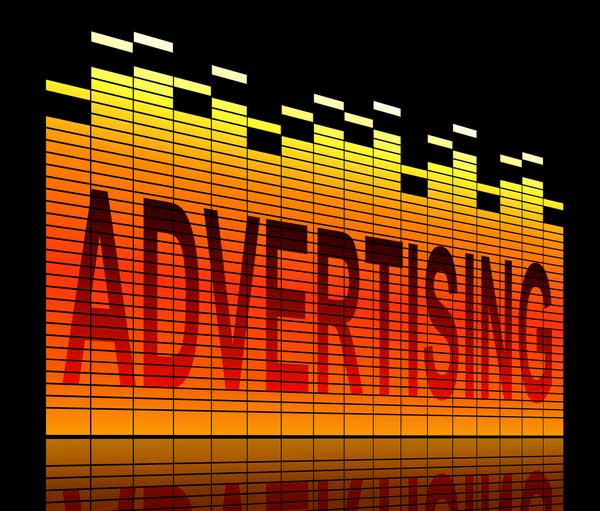Advertising is everywhere—from TV commercials to social media sponsored posts to subtle product placements. With the average American exposed to around 10,000 ads per day, it’s an industry worth nearly $1 trillion dominated by massive corporations. But with most people actively avoiding or ignoring ads, have we reached peak advertising? Unfortunately, companies are finding new ways to bombard consumers with marketing, meaning we’re nowhere near the limit.

Traditional Advertising Builds Brand Awareness
The most common advertising is TV commercials, magazine ads, billboards, etc. that promote a product using some combination of the 5 Ps: product, price, promotion, place, and people. This traditional advertising is still popular for building brand awareness that may not directly lead to sales. When you think of a soda, you think of Coke or Pepsi. For shopping, Walmart comes to mind. And for trainers, Nike is top-of-mind. These brands spend billions on advertising to cement their positioning in consumers’ minds.
Some lifestyle brand ads like Nike won’t even mention specifics of the product. They’ll simply associate their brand with aspirational people and activities. This awareness advertising works well for fast-moving consumer goods. Fierce competition for shelf space at retailers like Walmart pushes brands to spend more on traditional advertising as proof of their marketing commitment. While not as direct-response oriented as digital ads, traditional awareness advertising provides an important branding halo effect.
Search Advertising Targets Buying Intent
Search advertising like Google Ads is the fastest growing ad category because it catches people as they’re looking to make a purchase. Paying to appear at the top of “mountain bikes” searches gives a company a great chance of selling some mountain bikes. Since it’s so effective, search advertising is also expensive—which is why it makes up a huge chunk of Google’s revenue.
Online ads benefit from targeting data and algorithms to serve suggestions most likely to convert. There’s no wasted ad spend on uninterested audiences like with TV. Plus, search advertising grows along with e-commerce. When people go online to research products, paid search ads have the precision targeting to influence their buying decisions.
Influencer Marketing Leverages Trusted Voices
Influencer advertising on social platforms like Instagram and TikTok has also exploded recently. Influencers carefully build relationships with their followers to be seen as trusted voices on topics like fashion, food, or travel. When an influencer promotes a product, their audience sees it as a genuine recommendation from someone they like, not an annoying interruption. It’s a soft sell compared to traditional commercials. Brands benefit from influencers’ authentic connections, and influencers earn income through sponsorships and affiliate sales.
Customer Acquisition Costs Drive Startup Marketing
New companies trying to gain awareness have no choice but to spend heavily on advertising. Investors want to see rapid growth, which means aggressively acquiring customers—often at a loss. Customer acquisition costs measure how much a company has to spend on marketing per new customer. If the cost to acquire a customer is higher than what that customer will spend with the company, the business model is flawed.
Uber infamously spent billions in investor capital subsidizing rides and driver incentives to launch their two-sided marketplace. Smaller startups need advertising to get those critical first customers. With more people starting businesses, advertising spend will continue rising across the board to aid customer acquisition.
Established Brands Secure Customer Loyalty
According to an Insider Intelligence report, the top ad spenders are actually the biggest, most established brands. Coca-Cola, McDonald’s, Apple, and other dominant companies advertise to keep their brands top-of-mind. If these companies stopped advertising, you probably wouldn’t forget them entirely. But advertising cements emotional connections and nudges people to buy sooner.
These major brands also want to lock in lifetime loyal customers. Americans spend an average of 57% more with companies they feel loyal to. That’s why brands aim ads at young people—to win their business early before competitors can. They know securing loyal customers now pays dividends over decades of repeat sales. So despite having high brand recognition already, big companies keep advertising budgets high to maintain their competitive edge.
New Platforms Expand Ad Inventory
Companies are finding novel ways to reach customers as media consumption fragments across platforms. For example, ad tech company Anzu is bringing dynamic in-game brand sponsorships to video games—letting publishers monetize their titles further. Rather than buying ads on TV or social media, brands can now reach gamers while they play.
Even beyond in-game ads, companies have to advertise across many platforms to catch their whole audience. Someone who mainly watches YouTube won’t see ads on traditional TV. This fragmentation means more total advertising, not less, as companies expand their spending to cover all media channels.
Predatory Products Raise Concerns
Most alarming is companies advertising harmful products like gambling and cryptocurrency apps. Sports gambling ads spend topped $2 billion in 2022, exploiting vulnerable audiences. And years of unchecked crypto hype led many novice investors to financial ruin. Advertising legally questionable products today can have disastrous impacts on people’s lives for decades to come.
Conclusion
Advertising volume has steadily grown with more media platforms, advertising formats, and intrusive targeting practices. And companies won’t stop spending billions on ads unless they stop working or regulations intervene. But learning to identify manipulative marketing helps us make informed decisions and exert our consumer power over brands.
